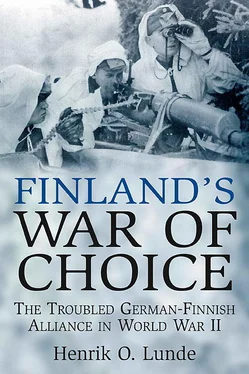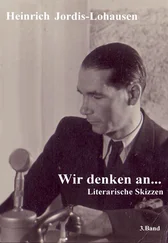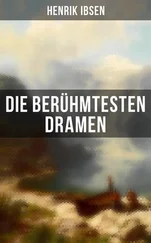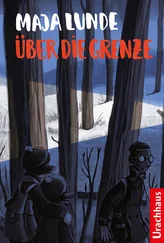In their negotiations with the Soviets the Finns tried to acquire the strategically important East Karelia, arguing for an eastern border running from the White Sea to Lake Ladoga (Laatokka). The Soviets were adamantly opposed and without the support of either Germany or the Western Allies in World War I, Finland had to settle for the boundaries of the former Grand Duchy. Finland’s independence and borders were formally recognized by the Peace of Tartu in 1920.
Finland had a difficult time settling on a consistent foreign and security policy after independence. Most of these difficulties were caused by external events. The earlier pro-German orientation ended with Germany’s defeat in World War I.
There followed a period of Western orientation along with enthusiastic support for the League of Nations. Even as late as August 2, 1937 Joseph E. Davies, the United States ambassador to the Soviet Union, reported from Helsinki that in European politics Finland followed England’s signals because England was Finland’s best customer. 1
The Finns were dismayed by the inability of the League to do anything to hinder the conflicts that broke out in the 1930s and this resulted in a security policy based on neutrality. At the end of 1935 Finland joined the Scandinavian neutrality block. This was a natural move because of the close historical, cultural, and economic ties between the Scandinavian countries. 2However, this association proved unworkable since these countries could not agree on a common policy when faced with a crisis.
Relations between Finland and Germany cooled in the 1930s. In Finland, as in the other Scandinavian countries, the Nazi regime was sharply criticized. In 1939, Finland caused considerable resentment in Germany by joining Sweden and Norway in rejecting a proposed nonaggression pact.
Finland signed a non-aggression pact with the Soviet Union in 1932 at the latter’s invitation, and this pact was renewed in 1934 for a period of ten years. Tensions with the Soviet Union began to grow in 1938 when the Soviets initiated secret discussions with Finland. The reason for the discussion, according to the Soviet emissary, Boris Yartsev, was the possibility that in the event of a Soviet conflict with Germany, the latter might use Finland as a launch pad for an attack against the Soviet right flank. In such an eventuality, the Soviets would not wait for the attacker to advance to their border, but would strike the enemy in Finland. With this possibility in mind, the Soviets now demanded the right to aid Finland.
The confidential talks with Yartsev continued throughout the spring and summer. On August 11, 1938, the Finns presented Yartsev a draft treaty in which Finland formally declared that it would not permit any foreign power to obtain a foothold on its territory for an attack on the Soviet Union. The Soviets were requested to reiterate their assurance that they would respect Finland’s territorial integrity. The Soviet Union was also asked to give its approval to the joint Finnish-Swedish remilitarization of the Åland (Ahvenanmaa) Islands. 3
The Åland Islands, between Sweden and Finland in the northern Baltic, were demilitarized in accordance with an international treaty in 1921. However, there were growing fears that Germany or the Soviet Union would rush to occupy them in case of a European war.
The Swedish and Finnish governments had agreed that Finland should, with Swedish assistance, embark on a partial remilitarization of the islands. This was approved by the signers of the 1921 agreement and by the League of Nations. The Soviet Union—to which this proposal was also presented although it had not signed the 1921 agreement—delayed its answer and implied that permission would be granted only on condition that the Soviet Union was given the same status as Sweden in defending the neutrality of the islands. 4
On August 18, 1938 the Soviets demanded a written pledge that Finland would repel a German attack and agree to accept Soviet armed assistance. They also demanded facilities on the Finnish island of Suursaari (Gogland) in the Gulf of Finland for the purpose of building an air and naval base. In return, the Soviets offered to guarantee Finland’s independence and territory and to conclude a favorable trade treaty. The Finnish government rejected the proposals.
Soviet Foreign Minister Maxim Litvinov initiated fresh proposals in March 1939. He asked the Finns for the lease of five small islands in the Gulf of Finland so that the Soviet Union could defend the Leningrad passage. 5Mannerheim, who was now Chairman of Finland’s Council of Defense, advised the government not to reject these new proposals without trying to reach a compromise. The government did not heed his advice and rejected the Soviet proposal on March 8. Litvinov sent a special emissary, Boris Stein, to Helsinki to discuss the matter. He offered Finland 183 square kilometers of land on the eastern frontier in exchange for the islands. 6Mannerheim again advised meeting Stein halfway but again the government did not agree. 7The discussions broke down on April 6. It was not the failure of these negotiations that changed the situation between Finland and the Soviet Union radically in 1939 but rather the new relationship between Germany and the Soviet Union.
The Ribbentrop–Molotov Pact
On August 23, 1939 the German Foreign Minister, Joachim von Ribbentrop, flew to Moscow where he and the Soviet Foreign Minister, Vyacheslav Molotov, signed the now famous non-aggression pact. The two countries had already concluded an economic agreement on August 19.
The Soviet Union agreed on the economic accord to provide food products and raw materials to Germany in exchange for finished products. In the non-aggression pact, both countries agreed not to take aggressive action against each other if either became involved in war.
A secret protocol to the non-aggression pact (its existence was denied by the Soviets until 1989) spelled out the respective spheres of influence of the two countries in the Baltic area. It reads in part:
In the event of a territorial and political rearrangement in the areas belonging to the Baltic states [Finland, Estonia, Latvia, and Lithuania], the northern boundary of Lithuania shall represent the boundary of the spheres of influence of Germany and the U.S.S.R. 8
This shows that Germany left Finland within the Soviet sphere of influence.
This non-aggression pact gave the Soviets the buffer they desired as protection against an attack from the west, something they had been unable to secure from France and Britain in earlier negotiations that summer. For three centuries, the creation of a buffer zone had been—and continues to be—a central goal of Russian security policy.
Russia’s concern for its security is understandable when viewed in historical context. For 300 years Russia had faced devastating attacks from the west, beginning with the Swedish invasion in the Great Nordic War (1699–1720) and continuing with the invasions of Napoleon and later Germany, Austria, and Turkey in World War I. It is regrettable that Russian fears led to occupation and repression of neighbors with common borders. The non-aggression pact also secured for Joseph Stalin time to modernize and increase the strength of the Soviet military forces. These forces had been badly weakened by earlier purges, as was soon to be demonstrated by their less than stellar performance in the Winter War.
For Germany, the pacts (economic and non-aggression) were viewed by Adolf Hitler as a temporary detour on the road to the ultimate military destruction of the Soviet Union. They removed the immediate threat of a two-front war. If the Western Allies couldn’t count on cooperation from the Soviet Union, Hitler speculated that they would not react militarily to his planned invasion of Poland since there was no way for them to influence the fate of that country without Soviet assistance. In addition, the pacts secured for Germany important economic resources needed for its war industries, thus minimizing the effects of any possible economic blockade.
Читать дальше












